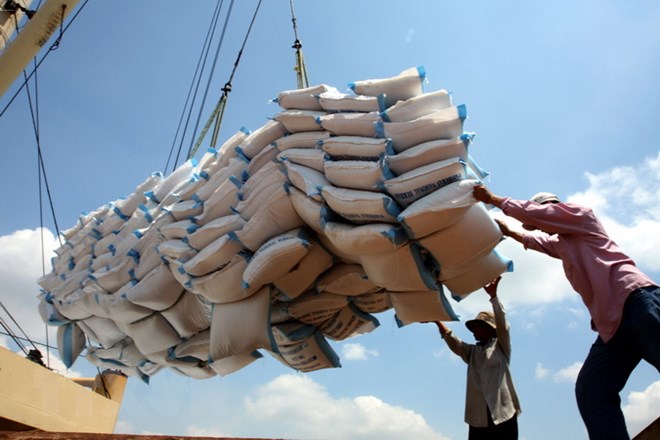 |
|
Decree 107/2018/ND-CP on conditions for rice exports has removed barriers for rice exporting businesses. — Photo baotintuc.vn
|
The move is part of the Government’s efforts to create favourable conditions for rice traders, improve the competitiveness of Vietnamese rice traders and develop the rice industry sustainably, according to the ministry’s Import-Export Department.
The department recently reported the assessment of the rice industry after more than one year of implementing a new decree which took effect in October, 2018 on conditions for rice exports.
The decree reduced barriers for rice exporting businesses, including by removing requirements such as having rice warehouses and milling and processing establishments; and allowing traders to rent storage, grinding, milling and processing facilities.
Viet Nam’s rice exporters have contributed to bringing Viet Nam’s high quality rice to more than 150 countries and territories around the world, the department said.
In recent years, many rice importing countries have made profound changes in policies for rice products, focusing on consumers. In bidding for rice exports under the government-to-private sector (G2P), the Vietnamese Ministry of Industry and Trade has announced information about bidding to traders through mass media and the Viet Nam Food Association.
All rice exporting businesses can participate in bidding, the department said.
In addition, the ministry is providing information of supply-demand in both domestic and global markets, facilitating the bidding decision-making process of traders, ensuring export efficiency and the prestige of Vietnamese rice exports.
For rice trading promotion, the ministry has advocated diversifying and innovating trade promotion activities, focusing on markets based on specific rice products, helping Vietnamese rice traders find and build relationships with reputable foreign partners, and ensuring stable and long-term business.
According to the department, restructuring rice production and other agricultural products needs to follow market signals. The strengthening of the value chain between production, consumption and export has also helped stabilise consumption, increasing farmers' income.
As a result, despite difficulties in Asia in 2019, Vietnamese rice has boosted exports to markets in Africa, Europe and the Americas.
However, Viet Nam’s rice export value declined in 2019, with nearly 6.3 million tonnes worth US$2.76 billion being exported, up 3 per cent in volume but down 10 per cent in value compared to 2018. The main reason was the falling price in global markets.
The rice price in November fell 12.6 per cent year-on-year, averaging $439.3 per tonne. — VNS

Vietnam’s rice sector forecast to face difficulties in 2020
The Philippines and China, Vietnam’s two major rice export markets, may reduce rice imports in 2020.

Vietnamese rice crowned world’s best title
Vietnam’s ST24 rice variety was recognised as the World's Best Rice this year.
 The Ministry of Industry and Trade has granted 47 certificates of eligibility to rice export businesses over the past year, lifting the number of rice exporters to 182 traders.
The Ministry of Industry and Trade has granted 47 certificates of eligibility to rice export businesses over the past year, lifting the number of rice exporters to 182 traders.